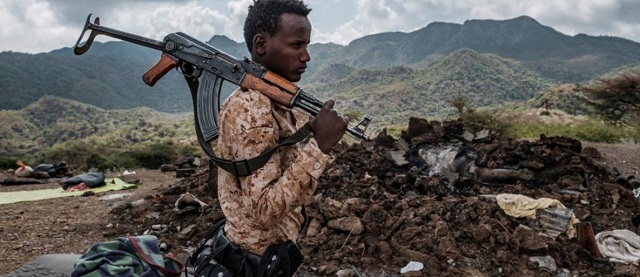
The conflagration between well-armed factions inside of Ethiopia could force Addis Ababa to abandon its role of regional anchor state
| THE INDEPENDENT | For the judicious observer of Ethiopia’s ethnic politics, there have been signs of ominous tensions between Tigray and the central government since Ethiopian Prime Minister Abiy Ahmed came to power two years ago.
The Tigray People’s Liberation Front (TPLF), which is the governing authority of the northern Ethiopian region of Tigray, had held a stranglehold on power for decades, since taking power in 1991. Following a months-long popular revolt that ushered him to power in early 2018, Abiy swiftly curbed the TPLF’s dominance over Ethiopia’s political and economic life, leaving its leaders feeling targeted and purged. The President of the Tigray region charged the Prime Minister with trying to ‘sideline and even criminalise’ the TPLF.
The TPLF had exerted power in Ethiopia through a governing coalition, composed of four ethnic-based parties, called the Ethiopian Peoples’ Revolutionary Democratic Front (EPRDF). But in 2019, shortly after Abiy took power, the other three parties annulled the EPRDF coalition and moved to replace it with a single national Prosperity Party that was not organised on ethnic lines.
The TPLF countered by breaking away from the new governing coalition and launching a vain attempt to unite opposition forces under a new federalist coalition. Failing that, it isolated itself from the political process.
Since losing power in 2018, the TPLF has worked to undermine Abiy’s reform efforts. Hard evidence is scarce, but the TPLF is alleged to be behind much of the internal tensions and ethnic violence that has plagued Ethiopia since the Abiy administration took control. Whether or not these reports are true, social media networks in Ethiopia are rife with accusations that the TPLF, working mainly through surrogates and break-away groups, has been fomenting conflict by organising, training, and financing forces opposed to the federal government. (The school yard massacre of Amharas in the Wollega region of Oromia sparked exactly such a round of accusations on social media networks.)
Fight over elections
In March 2020, the National Election Board of Ethiopia (NEBE), an autonomous body accountable to the House of Peoples’ Representatives temporarily postponed the national and regional elections scheduled for August 2020 due to COVID-19 concerns.
Legislators from Tigray, including the speaker of the Upper House, withdrew from the national parliament in protest. Relations soured further in September 2020 when the TPLF, in open defiance of the constitution and federal government, held elections in Tigray and reported a 98 percent victory in the popular vote. (The election was not overseen by international observers.) The newly-installed regional legislators in Tigray immediately declared that the federal government lacked legitimacy to govern the country and refused to recognise it.
The national assembly then countered by annulling Tigray’s election results and refusing to acknowledge the newly-elected leadership. Federal funding to the region was also slashed significantly, limiting the flow of resources only to local governments to protect basic services, and bypassing the TPLF. The leadership in Mekele, the capital of Tigray, called the cessation of their funding a declaration of war.
The attack
On November 4, 2020, Abiy Ahmed launched a military offensive against forces of the TPLF. Days before the assault by federal forces, the Tigray region’s president, Debretsion G. Michael, warned the public that Prime Minister Abiy was planning an attack to punish Tigray for its defiance.
Coming after months of rising tensions between the TPLF and the Abiy administration, the military action was precipitated by an alleged surprise night-time assault by the TPLF on a major Ethiopian National Defense Force (ENDF) base in Tigray that resulted in the killing of non-Tigrayan soldiers and the attempted looting of heavy artillery and weapons.
Declaring that the assault on the federal army base had “crossed the last red line,” Prime Minister Abiy maintained that his hand was forced by the TPLF leadership into sending the army “to save the country and the region.”
The military operation reportedly targeted Tigray’s militia establishments and the TPLF leadership, and not its citizens—though there were immediate worrying reports of civilian casualties, which proved difficult to confirm due to an Internet and telephone blackout imposed by the government on the entire Tigray region. The Council of Representatives also imposed a state of emergency on Tigray, effectively isolating it from the rest of Ethiopia.
The post Understanding Ethiopia’s conflict in Tigray appeared first on The Independent Uganda:.
from The Independent Uganda: https://ift.tt/3jzEwcg
0 Comments